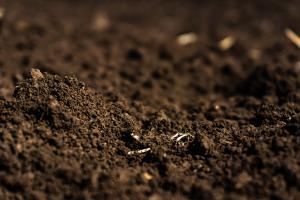Possible Reasons Why Snake Plant Leaves Curl
Snake plants, also known as Sansevieria, are popular houseplants for their beautiful foliage and easy-to-care attribute. However, like any other plant, they may encounter some issues that affect their growth and appearance. One of the common problems that snake plant owners may face is leaf curling. Several factors can cause curling leaves in snake plants, and understanding the underlying causes can help you address the issue and restore the plant's health.
Environmental Stress
Snake plants are known for their hardiness and ability to withstand various environmental conditions. However, extreme temperatures, dry air, and lack of humidity can cause stress to the plant and damage its leaves. When snake plants are exposed to high temperatures, their leaves may curl and become brittle. On the other hand, cold temperatures may slow down the plant's growth and cause the leaves to curl inward to conserve moisture.
To prevent environmental stress from affecting your snake plant, place it in a bright room with indirect sunlight and maintain a consistent temperature between 60-85掳F. Avoid placing the plant near drafty windows, air conditioning vents, or heating sources, as these can cause fluctuations in temperature and dry out the air. Consider using a humidifier or misting the leaves occasionally to improve humidity levels.
Overwatering or Underwatering
Another reason why your snake plant may be curling is due to incorrect watering. Overwatering or underwatering can both harm the plant and cause the leaves to curl. When the soil is too wet, snake plant roots may rot, and the leaves may turn yellow and curl. Similarly, if the soil is too dry, the plant may not get enough water, and the leaves may curl inward to conserve moisture.
To avoid overwatering, always check the soil before watering and only water the plant when the top inch of soil is dry. Also, make sure the pot has proper drainage to prevent excess water from accumulating. On the other hand, underwatering can be resolved by watering the plant more frequently or grouping it with other plants to create a humid environment.
Pests or Diseases
Curling leaves can also be a sign of pests or diseases in your snake plant. Spider mites, mealybugs, and scale insects are common pests that can infest snake plants and cause leaf curling. These pests feed on the leaves and can cause discoloration, wilting, and curling. On the other hand, fungal diseases like root rot or leaf blight can also cause damage to the plant's roots and leaves, resulting in curling and discoloration.
To prevent pests or diseases from affecting your snake plant, regularly inspect the plant leaves and treat any infestations or infections promptly. Use organic insecticides or fungicides, and avoid overfertilizing the plant, as it can weaken its immune system and make it more susceptible to diseases, pests, and other issues.
Conclusion
Overall, snake plant curling can be caused by various factors, including environmental stress, incorrect watering, and pests or diseases. As a responsible plant owner, it's crucial to identify the underlying cause and take necessary steps to address it. By following the tips mentioned above and ensuring proper care, you can revive your snake plant and enjoy its beauty for years to come.

 how many times do yo...
how many times do yo... how many planted tre...
how many planted tre... how many pine trees ...
how many pine trees ... how many pecan trees...
how many pecan trees... how many plants comp...
how many plants comp... how many plants can ...
how many plants can ... how many plants and ...
how many plants and ... how many pepper plan...
how many pepper plan...





























